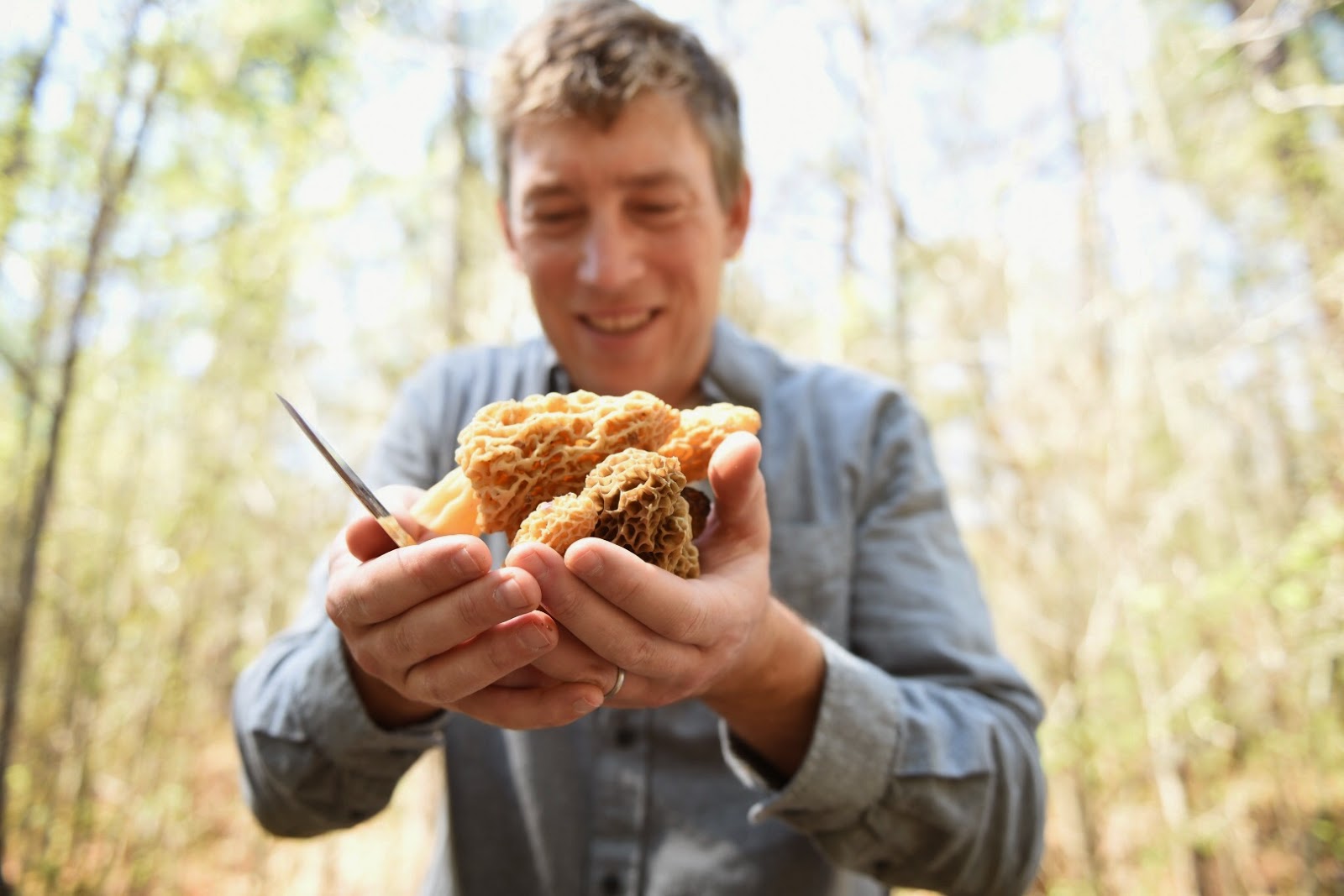Ray had already logged several months on the island and he was far from finished. We agreed to meet up again on Lummi in the spring, and when the time came, he graciously offered me the spare bedroom in the house he was renting not far from the ferry. "You don't want to drive all the way back to Seattle after dinner," he warned.
He was right. My wife Martha still talks about our meal at The Willows that night. Dishes included smoked mussels served in a little cedar box with wisps of fragrant smoke escaping from the lid, spot shrimp in nettle sauce with fresh-grated porcini steaming on top, spring lamb festooned with bright green miner's lettuce, and many other inventive takes on regional favorites. Each of the seven courses arrived with the physical trappings of the Pacific Northwest: atop hot stones gathered from a nearby beach; lying across a splinter of Douglas fir from the rainforest; in a clamshell. The Willows is not an overly ornate or fussy place, but its attention to detail—in particular, the details of place—speaks to a deep affection for the region.
Ray's collaboration with Chef Wetzel, Sea and Smoke: Flavors from the Untamed Pacific Northwest, is now out from Running Press. More than just a collection of recipes, the book explores what it means to live and work on an island in Puget Sound, and how the regional identity is expressed in local ingredients and foodways. Sockeye salmon, Dungeness crabs, hazelnuts, matsutake, and Pacific razor clams all make appearances, of course, as do other less expected ingredients: Nootka rose petals, madrona bark, the skin of halibut.
Joe Ray and I are neighbors now in southeast Seattle, so I caught up with him over a bahn mi and a game of pool at Billiard Hoang and asked what brought him cross-country to The Willows.
Joe Ray: By chance, I was invited to a wedding at The Willows in the summer of 2010. I met the Inn’s then-owner, Riley Starks, who’s a food lover’s food lover. He farmed, raised chickens, had run a pasta company, ran this great restaurant, and was part owner of a reefnetting operation called Lummi Island Wild—a total renaissance man. I even took pictures of his bookshelf, which featured titles on composting, seed starting, poultry raising, and Tom Wolfe’s A Man In Full. I was so impressed with him that I got my Boston Globe editor on the phone and sold her a story about Riley and the unbelievable setup on Lummi and stayed a few extra days. At some point in there, he mentioned that the “chef from Noma” was coming to be the chef at the Inn. It turned out to be Noma’s chef de partie, a young chef named Blaine Wetzel.
LC: Do you remember your first taste of Wetzel's food?
Ray: Of course! I was still living in Europe, but went back up to Lummi that December and was the first journalist to spend time with Chef Wetzel. In Europe, I’d been lucky enough to eat at several of the world’s best restaurants, including El Bulli, Sant Pau, El Celler de Can Roca, and Noma. Wetzel’s food wasn’t at that level yet, but then again, he was still in his early 20s and it was clear he was on his way. I wanted to tell the story of both the riches they’re blessed with up there and how it all comes together with Blaine in the kitchen to turn The Willows into one of the world’s great restaurants.
LC: You do that colorfully with a series of introductory chapters—vignettes, really—that capture life at the Inn and on Lummi Island. The second half of the book is the recipes. Translating restaurant magic into step-by-step instructions for the home cook is its own art form. Tell us your process...
Ray: The more detail-oriented you can be, the better. For a chef, recipes are often in their heads, with a few hastily scribbled lines in a notebook to jog their memories if need be. In my year at The Willows, I’d be paired with Blaine or one of the other cooks every Friday, all day long, and we’d turn one or two recipes they were cooking for that night's meal for 30 into something that serves 4 for the book. It’s a lot to work through. Something that might require a huge stockpot at the restaurant might only need a saucepan for the book, but I’d be damned if I was going to spend a full year up there and not nail these.
LC: Seriously, though. Is this a book for the aspirational chef or can any home cook reasonably make a meal from it?
Ray: I think it’s a bit of both. This isn’t something full of weeknight meal ideas. At all. This kind of food doesn’t happen quickly, even if you’re a chef. But if you want to make incredible food, like The Willows’ famous smoked salmon, this is how they do it.
LC: I remember that smoked sockeye! At any other restaurant it would be a centerpiece. At The Willows it was a "snack" in between courses. Frankly, some of those snacks are as memorable as the mains. I see that one of my favorites, Caviar and Crepes, opens the recipe section...
Ray: Yes! Try it!
LC: Any final words of wisdom for home cooks who want to incorporate a sense of place into their cooking?
Ray: Cook the best of what you have access to. The Willows is a great model for this. Yes, they forage, but it’s just a part of it. They’ve also got a farm for fresh vegetables, salmon from Lummi Island Wild, and Jeremy Brown [a local troller], so it’s much more a combination of what’s growing and what's perfect right now.
Author photo by Steve Raichlen; Dried Mirabelle Plum Skins by Charity Burggraaf



























































